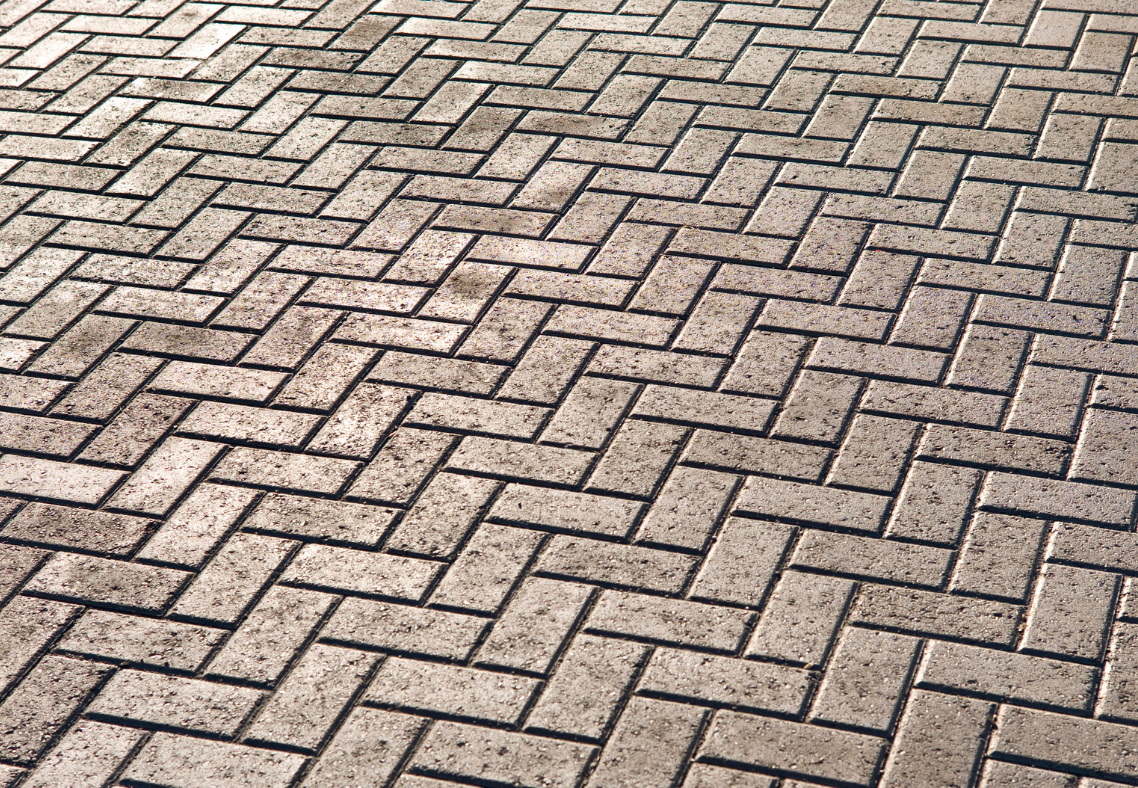A sloping interlocking walkway can be both a safety hazard and an aesthetic concern for homeowners in the Greater Toronto Area (GTA). These walkways, while durable and visually appealing when properly installed, can develop uneven surfaces over time. This can result in trip hazards, water pooling, and even long-term structural issues if not addressed. Fortunately, with the right approach, tools, and expertise, you can restore your interlocking walkway to its original, level condition. Whether you’re a hands-on homeowner or seeking professional help, this guide will walk you through the common causes of sloping pavers, step-by-step repair instructions, and how Green Machine can help homeowners in the GTA ensure a safe, stable, and stunning outdoor space.
Answering The Question: How To Fix A Sloping Interlocking Walkway?
Understanding the Causes of a Sloping Walkway
Before diving into the repair process, it’s essential to understand why your interlocking walkway may be sloping or uneven in the first place. Identifying the root cause ensures that your repair efforts will be effective and long-lasting.
1. Improper Base Installation
A strong, level foundation is key to the longevity of any interlocking surface. If the base wasn’t excavated to the correct depth or compacted properly during the original installation, it may begin to settle unevenly. This causes pavers to shift and slope over time.
2. Soil Erosion
Inadequate drainage or sloped landscaping can cause water to flow underneath the walkway, eroding the sub-base material. Over time, this leads to voids beneath the pavers, which eventually sink or tilt into the empty spaces.
3. Freeze-Thaw Cycles
The GTA experiences a wide range of temperatures throughout the year, especially in winter. Moisture beneath the pavers can freeze and expand, then thaw and contract, causing the base material to heave or settle, which leads to paver displacement.
4. Heavy Loads
Although interlocking pavers are strong, they’re not designed to support extremely heavy objects like parked vehicles, construction equipment, or large planters. Heavy loads can compress the base unevenly, creating sunken or sloped sections over time.
Step-by-Step Guide to Fixing a Sloping Interlocking Walkway
If your walkway has started to slope or sink, it doesn’t necessarily mean a full replacement is needed. Often, spot repairs or sectional resets can restore the area without redoing the entire walkway.
1. Assess the Problem
Begin by identifying where the walkway has become uneven. Use a long level or string line to measure the slope. Mark the affected pavers with chalk or tape so you can target the problem areas without disturbing the rest of the walkway.
2. Remove the Affected Pavers
Using a flathead screwdriver or a paver extractor, gently lift out the uneven pavers. Be careful not to damage their edges—these pavers can usually be reused. Set them aside in a safe place, organized by shape and pattern for easier reinstallation.
3. Excavate and Prepare the Base
Dig out the base material beneath the lifted pavers. You’ll want to excavate down to about 6–8 inches, depending on the original installation depth. Remove any old, loose, or eroded base material, and inspect the subsoil for signs of water damage or instability. Use a plate compactor or hand tamper to compress the subsoil, ensuring a firm, stable surface before rebuilding the base.
4. Add and Compact New Base Material
Introduce a fresh layer of crushed stone or gravel to the excavated area. Use only high-quality aggregate (often referred to as “HPB” or “high-performance base” in the GTA) that provides excellent compaction. Compact the base in layers (every 2–3 inches) to ensure stability and prevent future settling.
5. Apply Bedding Sand
Spread a 1-inch layer of coarse, sharp sand over the compacted base. Level it using a screed board to create a flat, even surface for laying the pavers. Avoid using soft or fine sand that won’t hold its shape under pressure.
6. Reinstall the Pavers
Carefully place the pavers back onto the leveled sand bed, aligning them with the existing walkway pattern. Use a rubber mallet to gently tap them into place, ensuring they’re flush with adjacent pavers and evenly spaced.
7. Fill the Joints
Once the pavers are back in place, sweep polymeric sand into the joints between them. This special sand hardens when moistened, locking the pavers in place and preventing weed growth and insect infestation.
8. Compact and Seal
Run a plate compactor over the repaired section to help the pavers settle and lock into the bedding sand. After compaction, lightly mist the area with water to activate the polymeric sand. Be sure not to over-water, which can wash out the sand before it sets.
Optional: After the sand has fully cured (usually 24 hours), you may choose to apply a sealer to protect the surface from stains and fading.
Preventative Measures to Avoid Future Issues
To ensure your walkway remains level and attractive for years to come, consider these preventative steps:
- Regular Maintenance: Inspect your walkway seasonally for signs of shifting, cracking, or weed growth. Early intervention prevents small problems from becoming costly repairs.
- Proper Drainage: Make sure water flows away from the walkway using proper grading, downspout extensions, and landscape drains. Poor drainage is a major cause of base erosion.
- Avoid Heavy Loads: If possible, avoid placing heavy equipment or large planters on the walkway, especially during spring thaw when the ground is soft.
- Re-sanding Every Few Years: As polymeric sand wears down, re-sanding helps lock the pavers in place and keeps weeds at bay.
Contact Green Machine for Interlocking Walkway Installations in GTA
If you’re dealing with a sloping or uneven interlocking walkway, don’t wait until the problem worsens. Green Machine is your trusted partner for professional hardscape repair and installation in the Greater Toronto Area. With years of experience serving homeowners across Toronto, Vaughan, Richmond Hill, Markham, and beyond, we specialize in building long-lasting, low-maintenance outdoor spaces. Our team will inspect your walkway, determine the cause of the sloping, and provide expert solutions using high-quality materials and industry-leading techniques. Whether it’s a simple fix or a full restoration, Green Machine delivers reliable results with an eye for detail and design. Contact Green Machine today to schedule your consultation and restore the safety and beauty of your walkway. Let us help you take the first step toward a stronger, more appealing outdoor space.
Frequently Asked Questions (FAQ) About Interlocking Services in the GTA
What interlocking services does Green Machine offer?
Green Machine provides a comprehensive range of interlocking services, including driveway installations, patio construction, walkway creation, and repair services. We specialize in designing and installing interlocking pavers that enhance the aesthetic and functional aspects of your outdoor spaces.
Do you offer design consultations for paver color selection?
Yes, we offer personalized design consultations to help you choose the right paver colors and patterns that complement your home’s style and meet your preferences. Our experts consider various factors, including your home’s exterior, landscape, and the GTA climate, to recommend suitable options.
How long does an interlocking paver installation take?
The duration of an interlocking paver installation depends on the project’s size and complexity. Typically, installations can take anywhere from a few days to a couple of weeks. We provide a detailed timeline during the consultation phase.
What maintenance is required for interlocking pavers?
Interlocking pavers require minimal maintenance. Regular cleaning, occasional re-sanding of joints, and sealing every few years can keep your pavers looking new and extend their lifespan.
Are your interlocking paver installations covered by a warranty?
Yes, Green Machine offers warranties on our interlocking paver installations. The specific terms and duration of the warranty are discussed during the consultation and outlined in the service agreement.

